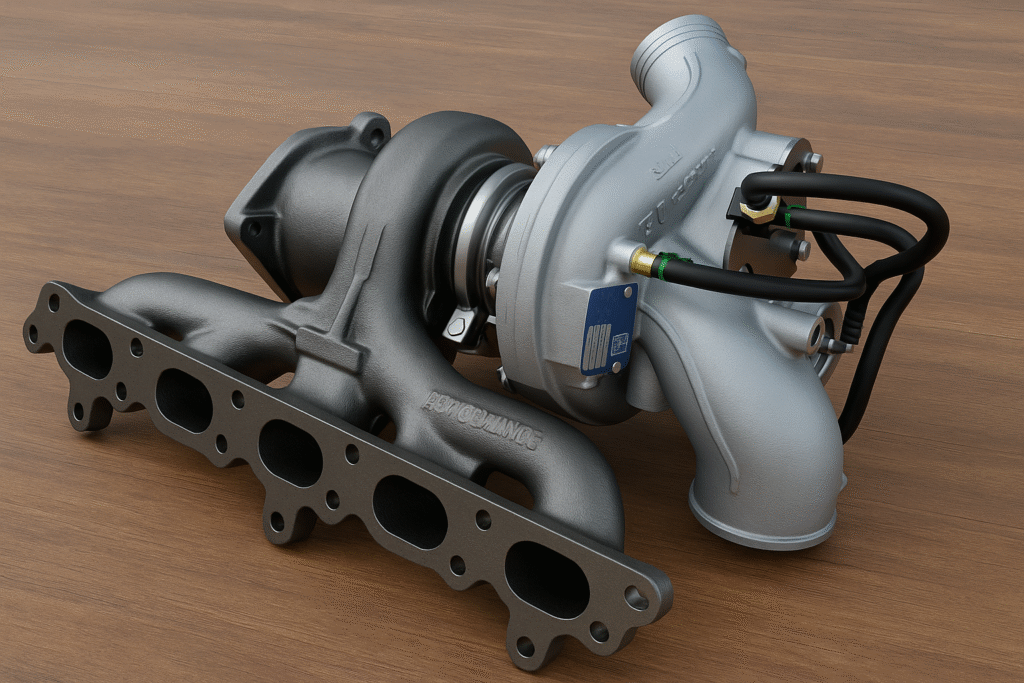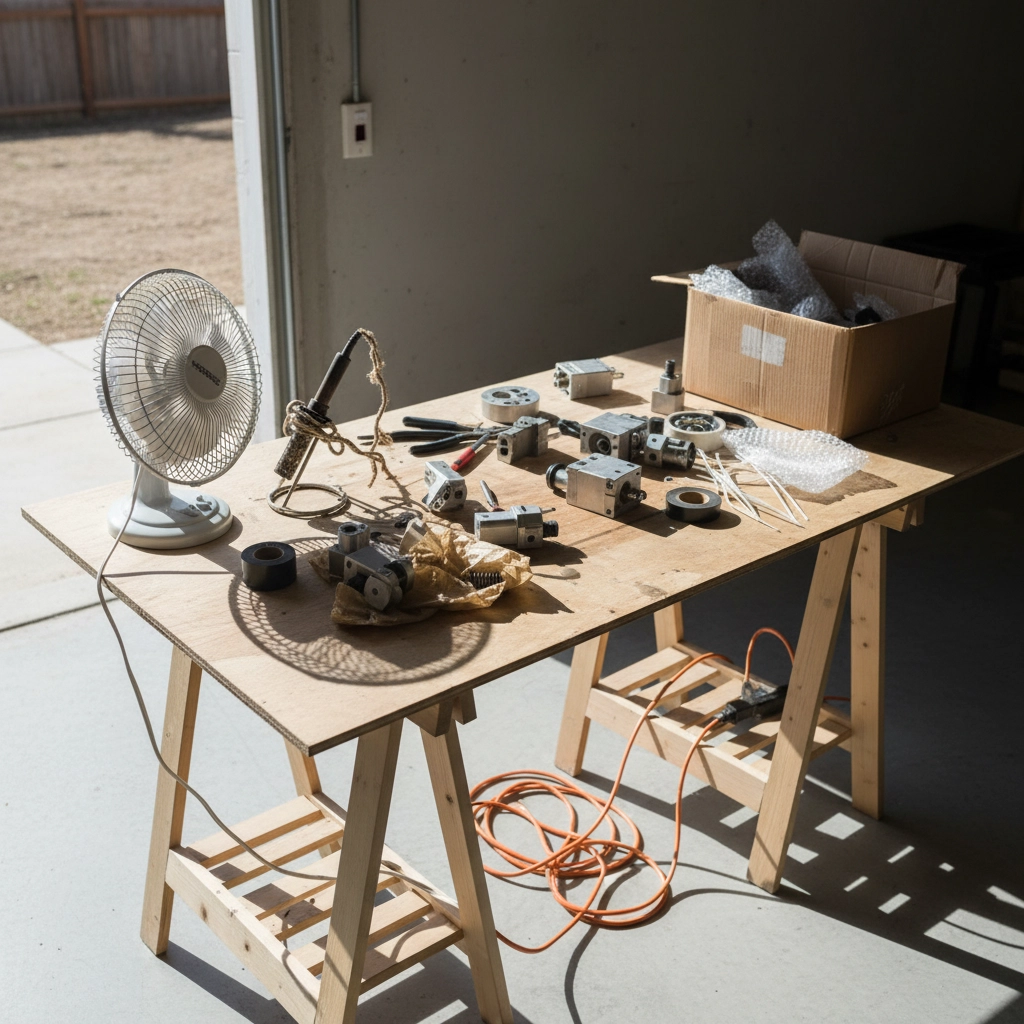
We are thrilled to dive into one of the most misunderstood components in Volvo 5-cylinder turbo systems: the Turbo Control Valve (TCV). If you’ve been considering an aftermarket TCV upgrade for your S40, C30, S60, or V70, this page is for you. We’ll revolutionize your understanding of why that “performance upgrade” might actually sabotage your tune and hurt your engine’s reliability.
What Exactly Does Your TCV Do?
The TCV is the ECU’s mechanical connection to the turbo wastegate actuator; it executes the ECU’s commands to manage when and how much boost pressure your turbo produces by controlling the wastegate actuator.
Here’s how it works: Your ECU sends electrical signals to the TCV based on how much the torque model boost requirement is. The TCV then modulates vacuum pressure to the wastegate diaphragm, which opens or closes the wastegate to control exhaust gas flow around the turbo. More exhaust gas through the turbine equals more boost. Less exhaust gas means lower boost pressure.

This precise control allows your Volvo to maintain optimal boost levels across the entire RPM range, ensuring consistent power delivery while protecting your engine from dangerous overboosting conditions. The factory calibration balances performance, fuel economy, and reliability, something that requires incredibly accurate and responsive valve operation.
The Aftermarket TCV Marketing Machine
Welcome to the world of performance marketing, where every component becomes a “limiting factor” that needs upgrading. Aftermarket TCV manufacturers love to tell you that your stock valve is holding back power, that it can’t handle higher boost levels, or that it’s too slow to respond for serious tuning applications.
This narrative has convinced thousands of Volvo enthusiasts to spend their hard-earned money on aftermarket TCVs, believing they’re unlocking hidden performance potential. The reality? You’re often trading a precision-engineered component for a cheap industrial valve that’s been rebranded as a performance part.
ANNOUNCEMENT: Aftermarket TCVs Are Performance Killers
Here’s what we’ve discovered through years of tuning Volvo 5-cylinder engines: aftermarket TCVs consistently underperform compared to OE units. We’ll break down exactly why these “upgrades” cause more problems than they solve.
Boost Control Accuracy Issues
The most critical problem with aftermarket TCVs is their inability to maintain precise boost control. While your genuine Pierburg or OE TCV can hold boost within ±0.5 psi of target, aftermarket units often fluctuate by 2-3 psi or more. This inconsistency creates several problems:
- Inconsistent power delivery: Your car feels different every time you drive it
- ECU adaptation confusion: The engine management system can’t properly adapt to the erratic boost patterns
- Potential engine damage: Boost spikes can exceed safe levels without warning

Response Time Problems
Genuine TCVs are engineered with specific flow rates and response characteristics matched to your engine’s requirements. Aftermarket units, essentially cheaply manufactured industrial solenoids with automotive connectors, lack this precision engineering. The result is delayed wastegate opening that causes overboost, inconsistent boost control, and poor transitional throttle behavior.
During our R&D testing, we’ve measured response delays of 200-300 milliseconds longer with aftermarket TCVs compared to OE units. That might not sound like much, but it’s the difference between the wastegate opening in time to prevent a spike and an overboost event that the ECU then has to cut back.
Tuning Nightmares
As professional tuners, we’ll tell you straight: aftermarket TCVs make our job exponentially more difficult. Here’s why:
Unpredictable Behavior: Every aftermarket TCV behaves differently, even units from the same manufacturer. We can’t develop consistent calibration strategies when the hardware varies wildly between installations.
Compensation Tuning Required: Instead of optimizing for performance, we spend time trying to compensate for the TCV’s deficiencies. This means less aggressive timing, conservative boost targets, and ultimately less power than what your engine could safely produce with a proper TCV.
Reliability Concerns: We’ve seen aftermarket TCVs fail in as little as 6 months, often without warning. When they fail, they can stick open or closed, creating dangerous overboosting conditions or complete boost loss.
The Truth About OE TCV Capabilities
Here’s what the aftermarket companies don’t want you to know: your genuine Pierburg or OE TCV is already an incredibly capable component. These valves are engineered to handle up to 28 psi of boost pressure, more than enough for any reasonable street tune and most track applications.
Engineering Excellence
Pierburg has been manufacturing precision automotive components for over 100 years. Their TCVs undergo extensive testing for:
- Temperature cycling from -40°F to 300°F
- Millions of actuation cycles
- Pressure testing to 35+ psi
- Electromagnetic compatibility testing
- Corrosion resistance validation
Compare this to aftermarket manufacturers who often provide zero engineering documentation, no testing data, and vague specifications that sound impressive but mean nothing in practice.

Real-World Performance
We’ve successfully tuned hundreds of Volvo 5-cylinders running 20+ psi on stock TCVs with zero reliability issues. Our highest-boost street car, a C30 T5 K16 making 430+ horsepower, runs the original Pierburg TCV at 25 psi with perfect boost control and over 40,000 km of reliable operation.
The Cheaply Manufactured Industrial Valve Reality
Let’s revolutionize your understanding of what you’re actually buying when you purchase an aftermarket TCV. These aren’t precision-engineered automotive components, they’re industrial pneumatic solenoids manufactured in low-cost factories for applications like factory automation, air compressors, and hydraulic systems.
Here’s the typical process:
- A supplier orders generic 3-port solenoid valves from a low-cost manufacturer
- They specify automotive-style electrical connectors
- The valves get packaged with performance-oriented marketing materials
- They’re sold at 300-500% markup as “performance upgrades”
The core valve technology remains unchanged from industrial applications. There’s no automotive-specific engineering, no testing for engine bay conditions, and no optimization for turbo control characteristics.
Quality Control Issues
Industrial solenoids operate in controlled factory environments with regular maintenance schedules. Your engine bay subjects them to extreme temperature swings, vibration, contaminated air, and years of continuous operation without service.
We’ve dissected numerous failed aftermarket TCVs and consistently found:
- Low-quality sealing materials that degrade rapidly
- Inconsistent machining tolerances
- Weak electromagnetic coils that overheat
- Corrosion on internal components after just months of use

The Solution to a Problem That Doesn’t Exist
This brings us to the fundamental truth: aftermarket TCVs are solutions to problems that simply don’t exist. Your OE TCV isn’t limiting your performance potential, it’s optimized for it.
When customers experience boost control issues, the actual causes are typically:
- Vacuum line degradation or leaks
- Wastegate diaphragm failure
- Intercooler system leaks
- Mass airflow sensor contamination
- Carbon buildup on intake valves
Replacing a perfectly functional TCV with an inferior aftermarket unit doesn’t address any of these real issues while introducing new reliability concerns.
Our Professional Recommendation
After tuning hundreds of turbocharged Volvos and testing numerous aftermarket components, our recommendation is clear: stick with genuine Volvo or Pierburg OE TCVs. They offer superior accuracy, reliability, and tuning compatibility compared to any aftermarket alternative we’ve tested. In rare cases, we’ve chosen not to proceed with tuning when a customer insists on using an aftermarket TCV due to reliability and safety concerns.
If your TCV needs replacement, invest in a genuine unit from a reputable Volvo parts supplier. Yes, it costs more upfront, but you’ll save money long-term through better reliability, easier tuning, and consistent performance.
For those chasing higher power levels, focus your upgrade budget on components that actually matter: intercooler systems, exhaust manifolds, turbo upgrades, and professional tuning. These modifications deliver real performance gains without compromising reliability or driveability.
Your Volvo’s engineers spent millions of dollars developing the boost control system. Trust their expertise over marketing claims from companies selling rebranded industrial valves at performance part prices.
At Penta Performance, we’re committed to helping you make informed decisions about your Volvo’s performance modifications. Our extensive experience with these systems has shown us time and again that the best “upgrade” for your TCV is often simply maintaining the OE component properly and addressing the real issues affecting your turbo system’s performance.
